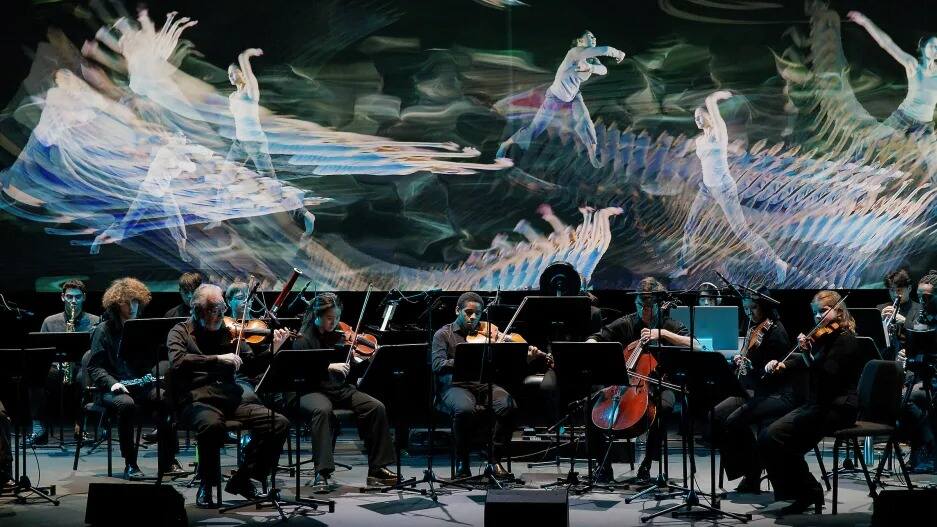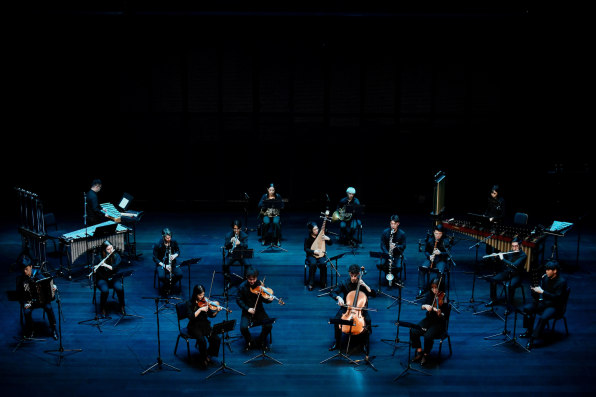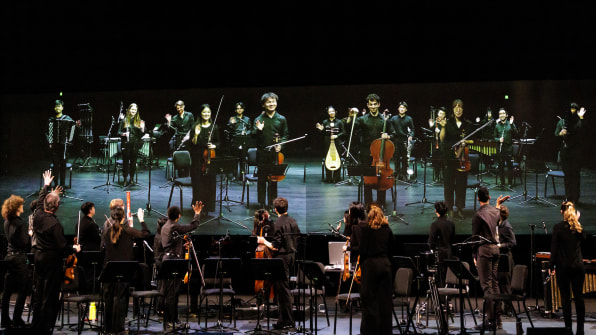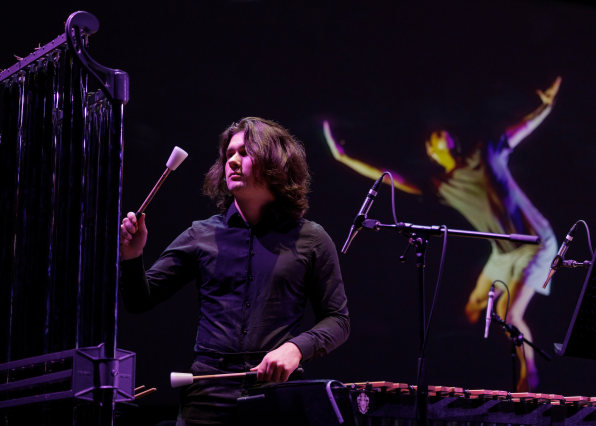- | 10:30 am
The future of live performance is already here
Orchestras at the Juilliard School’s Tianjin, China, and New York City campuses played a perfectly synchronized concert together—while 7,000 miles apart.

The piano went first. Two notes in C, one octave apart, played over and over and over again, like the trusty beat of a metronome. Then came the violins, and the flutes, and the trumpets, and, slowly, almost imperceptibly, the music crescendoed from the lips and fingers of 40 musicians playing in unison.
Except it wasn’t one piano, it was two pianos—and two sets of string instruments, and two sets of brass and wind instruments—one located in New York City, and the other in Tianjin, China.

The artists came together in February for what may well have been the world’s first synchronized live orchestral performance. Spanning two locations on two continents (at the Peter Jay Sharp Theater on the Juilliard School’s iconic Manhattan campus, and at its counterpart in China, which opened in 2020), the musicians performed the same musical piece simultaneously, and without a conductor.
The performance was broadcast on a screen right behind the performers at the Sharp Theater. From there, the concert was recorded and streamed live for the rest of the world to tune in. The musicians were separated by almost 7,000 miles, yet the music came together flawlessly.
In large part, that’s due to the selected musical piece: “In C,” composed in 1964 by the American composer Terry Riley. Classical music aficionados may hear a resemblance to Maurice Ravel’s iconic “Boléro.” That’s because like “Boléro,” “In C” is repetitive with a vengeance. (The note “C” acts as a backbone to the piece). But it is precisely for its rigid structure that “In C” was chosen for this experiment.
“Throughout . . . it just plays this note C like a ticker, and then around that is all this improv and these blooming melodic flowers and all the instruments,” says David Serkin Ludwig, a composer with a brilliantly fitting last name who’s also the dean and director of Juilliard’s music division. “That built-in repeated note on the piano facilitates the coordination over the distance.”
And while this isn’t the first time an orchestra has performed without a conductor, the fact that this piece can be performed without one is part of the charm: “Everyone is making their own choices in the piece and finding ways to work together,” Ludwig says.
And so, it started with the pianos—two Disklavier Yamahas known for a self-playing kind of technology that makes it look like the keyboards have fallen under the spell of the Phantom of the Opera—synced up so they could play the exact same note at the exact same tempo, like “a firm handshake” between the two campuses, Ludwig explains.

Except syncing melodies across two locations, let alone two continents, yields inevitable delays. So to ensure that both sides aligned, the feed from Tianjin was delayed by about 30 seconds and mixed in live, on stage, by a member of the Juilliard’s Center for Innovation in the Arts—like a classical music DJ of sorts. To further enhance the seamless blend of sounds, the team placed an array of strategically located speakers right next to the musicians on the New York stage.

And for an extra dose of entertainment, they partnered with five students from Juilliard’s dance division, who choreographed individual dance movements that were superimposed live on the back screen, in tune with the melody.
I was unable to attend the performance, so I can’t vouch for the in-person experience, but I wanted to test how seamless the sound was from home. I listened to the performance with my eyes closed for a bit, and all I could hear was one perfectly tuned orchestra. No dissonance, no blips. So, could the same auditory bliss have been achieved if the musicians had played a more fluid piece that is less mathematical and more likely to be subject to personal interpretation, like, say, a Brahms or a Tchaikovsky? Or if two singers had performed a live duet from two different locations?
Ludwig says it would be challenging with current technology, but as bandwidth increases, he expects the latency time, or the amount of time it would take for the signal to travel from one point to another, could decrease to about 10 milliseconds, which could make the idea more viable. For now, he is dreaming of a version of “In C” where people from around the world could tune in and play their instruments. “Ultimately the piece is about building community,” he says. “And that’s what we’re here for.”








































